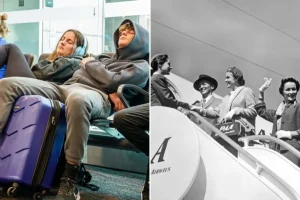From California to Oklahoma: How a Relocation Program Is Changing Lives
In a surprising twist to the usual migration patterns, some Californians are finding new hope and happiness in Oklahoma. A relocation program called Tulsa Remote has been offering $10,000 grants to remote workers willing to move to Tulsa for at least one year. According to a recent Los Angeles Times report, former California residents who took the leap are thriving in their new environment. The program, launched in 2019, has attracted over 7,800 applicants from California alone, with 539 making the move. Nationwide, more than 3,700 remote workers have relocated to Tulsa through this initiative, with an impressive 76% choosing to stay beyond their initial one-year commitment. This reverse migration from a coastal hub to America’s heartland represents a fascinating shift in how Americans are rethinking their priorities and life choices.
For Cynthia Rollins, the contrast between her former California life and her new Oklahoma existence couldn’t be more dramatic. “When I was in California, I was so consumed with the process of day-to-day living — the traffic, getting places, scheduling things,” she told the Los Angeles Times. “Here there’s so much more space to think creatively about your life and to kind of set it up the way you want.” This sentiment captures what many participants have discovered: that stepping away from high-pressure coastal living can create room for personal growth and life design that wasn’t possible before. The breathing room—both literal and figurative—that Tulsa offers has allowed transplants to reimagine their futures in ways that seemed impossible in California’s crowded and expensive environment.
Affordability stands as a primary motivation for many participants, but the benefits extend far beyond simple economics. Zach Meincke, who relocated with his wife three years ago, explained their decision was about creating the life they truly wanted. “There was no way we were going to move into a house in Los Angeles unless we had roommates, and that’s not an ideal situation,” he said. At 37, the couple realized that their dreams of homeownership and starting a family would remain out of reach in Los Angeles. Their research led them to Tulsa, where they discovered what they were looking for: “Tulsa is a cool place to live… if you’re a parent, this is the perfect place to raise your kid.” For many in similar situations, the program offered not just financial incentive but a pathway to milestones that had seemed increasingly unattainable in California—owning a home, starting a family, and building a more balanced life.
The requirements for the Tulsa Remote program are straightforward but specific: applicants must be at least 18 years old, work full-time remotely outside Oklahoma, be able to relocate within a year, and have lived outside Oklahoma for at least 12 months before applying. These parameters have created a unique community of transplants who bring diverse skills and perspectives to Tulsa while being able to maintain their existing careers. A spokesperson for Tulsa Remote highlighted that what connects applicants across the board are universal desires: “people want a true sense of community, affordable housing, access to great restaurants and culture and beautiful parks for their kids.” This speaks to fundamental human needs that transcend geography—needs that many found increasingly difficult to satisfy in high-cost coastal regions.
The program’s success comes against the backdrop of California’s ongoing exodus challenges. The Golden State has consistently ranked among the top states for outbound migration according to U.S. Census Bureau data and moving company surveys. Many departing residents cite California’s high cost of living and political environment as reasons for leaving. What makes the Tulsa Remote program particularly noteworthy is how it has transformed this broader migration trend into a targeted opportunity for both the relocating individuals and the receiving community. Rather than simply losing residents, California is seeing some of its workforce redistribute to places where their income stretches further and their quality of life improves, while Tulsa gains new residents who bring economic activity and fresh perspectives.
The implications of programs like Tulsa Remote extend beyond individual success stories. They signal a potential restructuring of American demographics in the remote work era, where smaller cities with lower costs of living can attract talent that previously clustered in established hubs. The high retention rate—with more than three-quarters of participants staying after their required year—suggests this isn’t just about the money but about genuine satisfaction with the new lifestyle. As one participant put it, they’ve found in Tulsa the ability to “build the lives they envisioned.” This satisfaction points to a future where geographic flexibility might lead to more Americans finding their ideal balance between affordability, community, and opportunity—a balance that increasingly seems possible outside the nation’s most expensive coastal enclaves. For cities like Tulsa, these programs represent not just population growth but a revitalization strategy that brings in diverse skills, perspectives, and economic activity from across the country.















